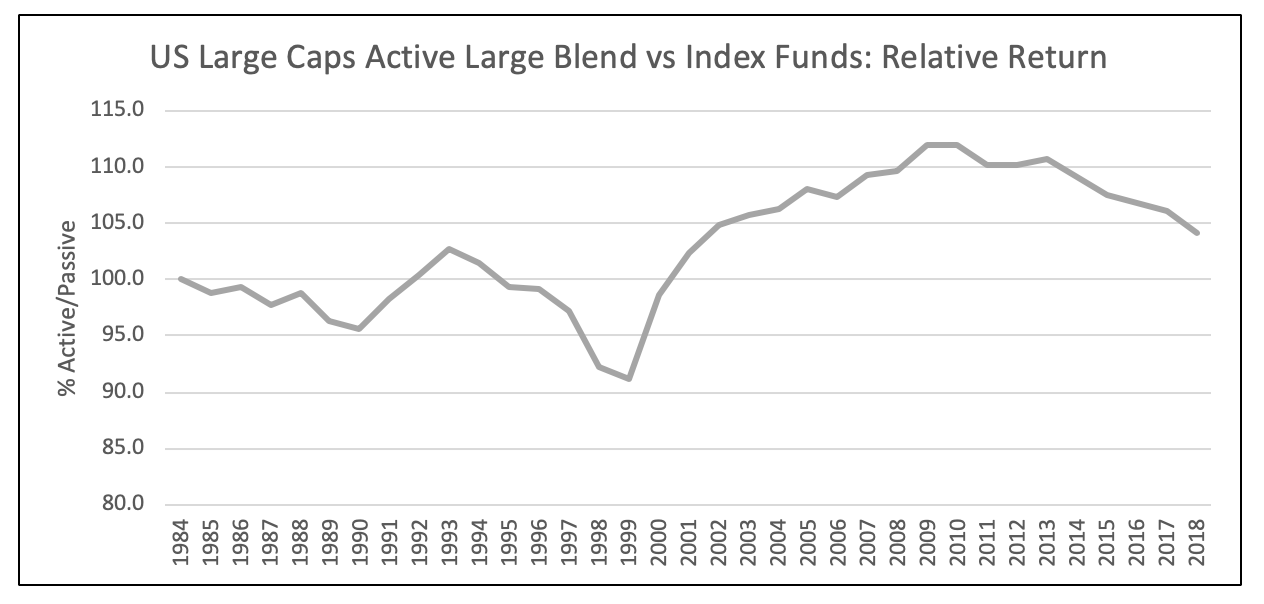Question: Actively-managed funds or index funds – which are the better investments for a 5- to 10- year period?
Answer: Both! As this chart of U.S. large cap stock fund returns illustrates, the performance of active and index funds can move in very long cycles.

This chart shows the average relative performance of active large blend funds and index funds over a 30+ year period, from 1985 through 2018. Specifically, it looks at the performance of funds in the Morningstar Large Blend funds that are not index or enhanced index funds (“active large blend”) and compares it to the performance of funds in the Morningstar S&P 500 Tracking category (“index”).
When the line is rising, the average active large blend fund is doing better than the index funds; when the line is falling, the average index fund is outperforming active large blend funds.
- Late 80s and early 90s: Index funds outperformed in the latter half of the 1980s and into the early 1990s, when the economy was recovering from the long recession of the 1970s and early 1980s.
- Mid 90s: Active funds were strong in 1992-94, as the economy dipped into a mild recession and then began to recover.
- Late 90s: Index funds again outperformed during the boom years that marked the balance of the 1990s.
- The Naughts: Active funds regained momentum during the more turbulent years of the 2000s, a period that included a brief recession (2001 to 2003) and the more severe downturn accompanying the financial crisis.
- The 2010s: As the economy began to recover from the turmoil of the financial crisis, index funds began to outperform again.
While the factors driving active and index performance are complex, this data suggests that the average actively-managed fund tends to do better in more turbulent economic environments, while the average index fund often outperforms when the economy is strong. It also suggests that holding both actively-managed and index funds in a portfolio could reduce volatility across economic cycles.